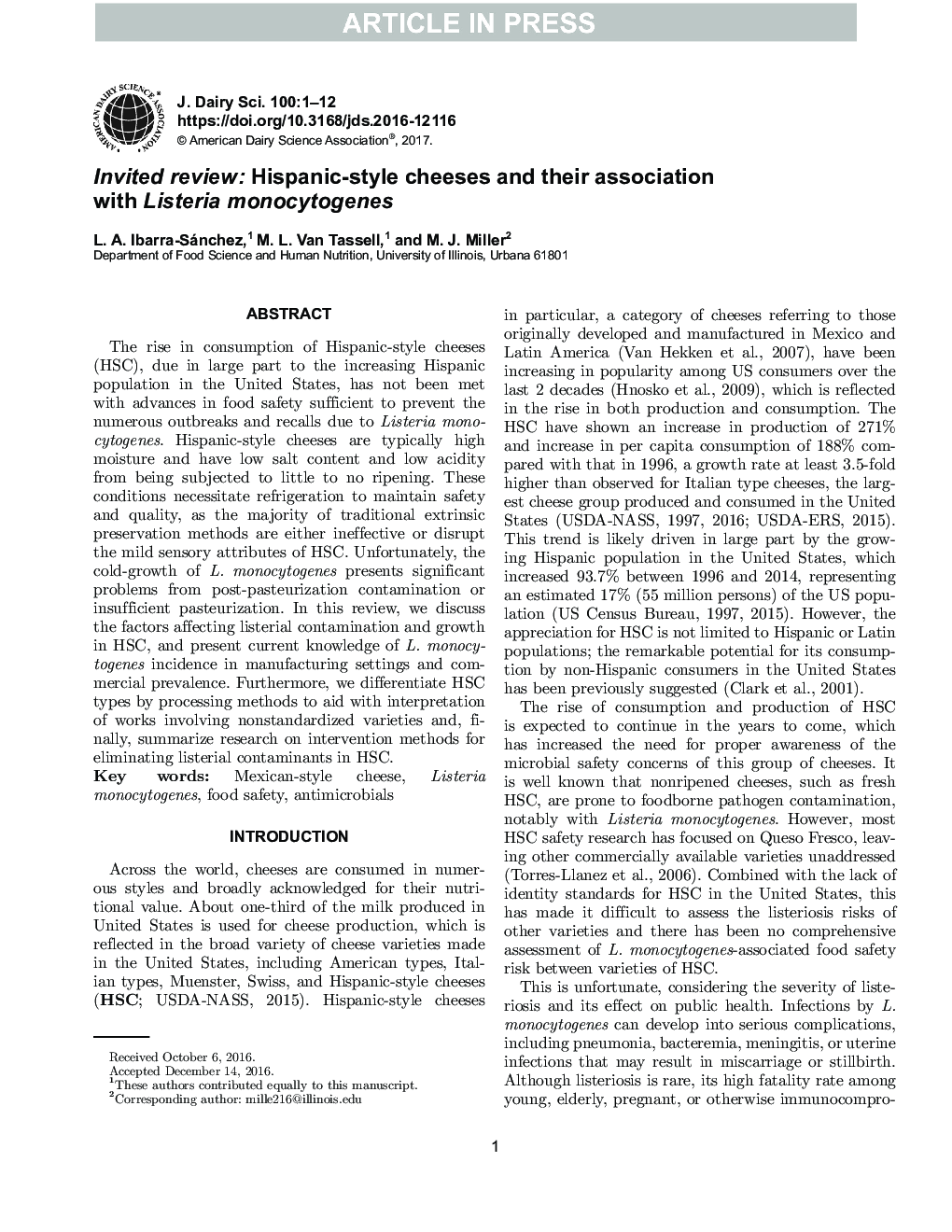| Article ID | Journal | Published Year | Pages | File Type |
|---|---|---|---|---|
| 5542306 | Journal of Dairy Science | 2017 | 12 Pages |
Abstract
The rise in consumption of Hispanic-style cheeses (HSC), due in large part to the increasing Hispanic population in the United States, has not been met with advances in food safety sufficient to prevent the numerous outbreaks and recalls due to Listeria monocytogenes. Hispanic-style cheeses are typically high moisture and have low salt content and low acidity from being subjected to little to no ripening. These conditions necessitate refrigeration to maintain safety and quality, as the majority of traditional extrinsic preservation methods are either ineffective or disrupt the mild sensory attributes of HSC. Unfortunately, the cold-growth of L. monocytogenes presents significant problems from post-pasteurization contamination or insufficient pasteurization. In this review, we discuss the factors affecting listerial contamination and growth in HSC, and present current knowledge of L. monocytogenes incidence in manufacturing settings and commercial prevalence. Furthermore, we differentiate HSC types by processing methods to aid with interpretation of works involving nonstandardized varieties and, finally, summarize research on intervention methods for eliminating listerial contaminants in HSC.
Related Topics
Life Sciences
Agricultural and Biological Sciences
Animal Science and Zoology
Authors
L.A. Ibarra-Sánchez, M.L. Van Tassell, M.J. Miller,
